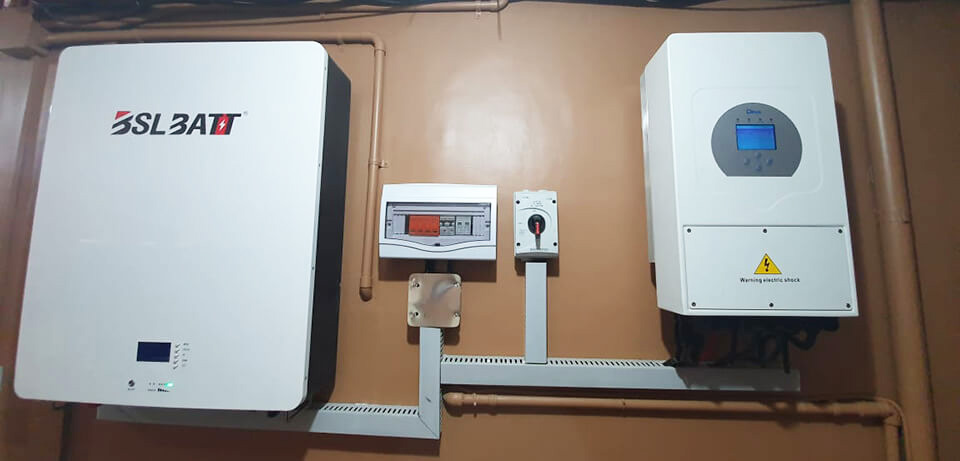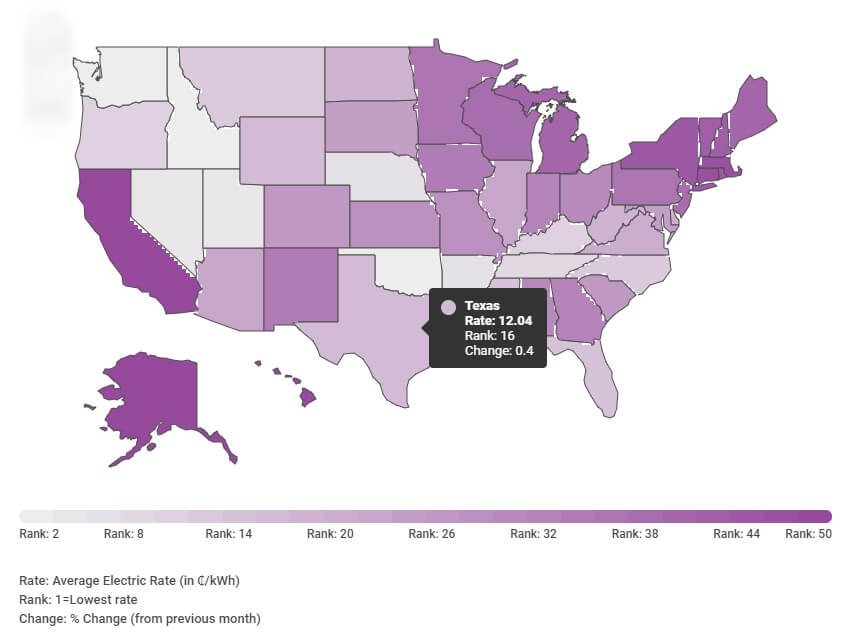The home photovoltaic systems power generation project is guaranteed by the grid company for grid-connected consumption. So how feasible is it to equip the home photovoltaic systems project with a home power bank? How many years can the cost be recovered? And what is the current global usage situation? In this article, we will discuss the feasibility analysis of the current photovoltaic solar system configuration home power from three cases. In some developed areas, the cost of electricity consumption is relatively high, and the overall grid facilities are not stable and reliable. Therefore, reducing the comprehensive electricity cost is the main driving force for installing home power. From the perspective of per capita electricity consumption, the per capita electricity consumption of Germany/USA/Japan/Australia will be 7,035/12,994/7,820/10,071 kWh respectively in 2021, which is 1.8/3.3/1.99/2.56 times of China’s per capita electricity consumption (3,927kWh) in the same period. From the perspective of electricity prices, residential electricity prices in developed regions around the world are also significantly higher. According to statistics from Global Petrol Prices, the average residential electricity price in Germany/United States/Japan/Australia in June 2020 is 36/14/26/34 cents/kWh, which is 4.2/1.65/3.1/4 times of China’s residential electricity price (8.5 cents) in the same period. Case 1:Australia Residential solar home power systems Australia’s average electricity bill has many variables, depending on the size of your home and the number of appliances you use every day. However, the average national electricity consumption in Australia is 9,044 kWh per year or 14 kWh per day. Unfortunately, in the past three years, household electricity bills have risen by more than $550. The household electrical equipment and power are shown in the following table:
| Serial Number | Electrical Equipment | Quantity | Power(W) | Electricity Time | Total Electricity Consumption(Wh) |
| 1 | illumination | 3 | 40 | 6 | 720 |
| 2 | Air conditioner (1.5P) | 2 | 1100 | 10 | 1100*10*0.8=17600 |
| 3 | refrigerator | 1 | 100 | 24 | 24*100*0.5=1200 |
| 4 | TV set | 1 | 150 | 4 | 600 |
| 5 | Micro-wave oven | 1 | 800 | 1 | 800 |
| 6 | washing machine | 1 | 230 | 1 | 230 |
| 7 | Other equipment (computer / router / range hood) | 660 | |||
| Total Power | 21810 | ||||
The average monthly electricity consumption of this household in Australia is about 650 kWh, and the average annual electricity consumption is 7,800 kWh per month. According to the electricity price trend report of the Australian Energy Market Council, Australia’s average annual electricity bill this year has increased by $100 over the previous year, reaching $1,776, and the average electricity bill per kilowatt-hour is 34.41 cents: Calculated with 7,800 kilowatt-hours of electricity per year: Annual electricity bill=$0.3441*7800kWh=$2683.98 Off The Grid Home Power Systems Solution According to the situation of the house, we designed a single-phase Solar power battery solution. The design uses 12 500W modules, a total of 6kW modules, and installs 5kW bidirectional energy storage inverters, which can generate 580~600kWh of electricity per month on average. Photovoltaic power can be used part of the time, and BSLBATT 7.5kWh lithium battery energy storage is configured according to the 6-hour peak power consumption period, which is used for load power consumption during peak periods without sunlight. Solar home power as a whole can basically meet customer demand for electricity.  Economic benefit analysis: At present, the cost of photovoltaic systems is $0.6519/W, and the cost of low-voltage energy storage batteries is about $0.2794/Wh. The energy storage investment of 5kW + BSLBATT 7.5kWh Powerwall battery is about $6000, and the main costs are as follows:
Economic benefit analysis: At present, the cost of photovoltaic systems is $0.6519/W, and the cost of low-voltage energy storage batteries is about $0.2794/Wh. The energy storage investment of 5kW + BSLBATT 7.5kWh Powerwall battery is about $6000, and the main costs are as follows:
| Serial Number | Equipment Name | Specification | Quantity | Total Price (USD) |
| 1 | Solar Power Kits | Crystalline silicon 50Wp | 12 | 1678.95 |
| 2 | Energy Storage Inverter | 5kW | 1 | 1399 |
| 3 | Powerwall Battery | 48V 50Ah LiFeP04 battery | 3 | 2098.68 |
| 4 | Other | / | / | 824 |
| 5 | Total | 6000.63 | ||
Case 2: America self-operated cake shop users Its electrical equipment and power are shown in the following table:
| Serial Number | Electrical Equipment | Quantity | Power(W) | Electricity Time | Total Electricity Consumption(Wh) |
| 1 | illumination | 3 | 50 | 10 | 1500 |
| 2 | Air conditioner (1.5P) | 1 | 1100 | 10 | 1100*10*0.8=8800 |
| 3 | Cold room | 2 | 300 | 24 | 24*600*0.6=8640 |
| 4 | refrigerator | 1 | 100 | 24 | 24*100*0.5=1200 |
| 5 | oven | 1 | 3000 | 8 | 24000 |
| 6 | Bread machine | 1 | 1500 | 8 | 12000 |
| 7 | Other Equipment (mixer / beater) | 960 | |||
| Total Power | 57100 | ||||
The store is located in Texas, with an average monthly power consumption of about 1400 kWh. The commercial electricity price in this place is 7.56 cents/kWh:  According to calculations, the monthly electricity bill of the changed merchant=$0.0765*1400kWh=$105.84 Off The Grid Home Power Systems Solution According to the user’s situation, the system adopts a three-phase residential battery solution. The system is designed to use 24 500W modules, a total of 12kW modules, and a 10kW two-way energy storage inverter, which can generate 1,200 kilowatt-hours of electricity per month on average, which basically meets the customer’s electricity needs. According to the operation of the cake shop, most of the load is concentrated in the peak power consumption period during the day, and the load is small at night. Therefore, photovoltaic power can be mainly used during the peak power consumption period, supplemented by home battery for solar and the grid; it can be mainly used at night solar power battery backup power, grid power as a supplement; therefore, home energy storage is equipped with BSLBATT 15kWh
According to calculations, the monthly electricity bill of the changed merchant=$0.0765*1400kWh=$105.84 Off The Grid Home Power Systems Solution According to the user’s situation, the system adopts a three-phase residential battery solution. The system is designed to use 24 500W modules, a total of 12kW modules, and a 10kW two-way energy storage inverter, which can generate 1,200 kilowatt-hours of electricity per month on average, which basically meets the customer’s electricity needs. According to the operation of the cake shop, most of the load is concentrated in the peak power consumption period during the day, and the load is small at night. Therefore, photovoltaic power can be mainly used during the peak power consumption period, supplemented by home battery for solar and the grid; it can be mainly used at night solar power battery backup power, grid power as a supplement; therefore, home energy storage is equipped with BSLBATT 15kWh
Post time: May-08-2024








